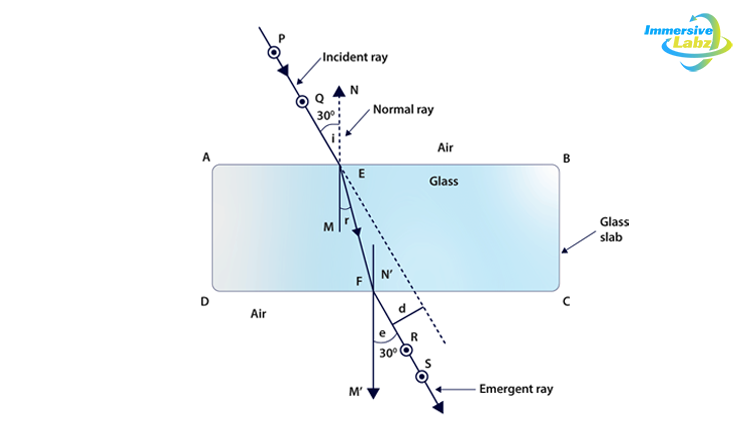Physics Practicals Class 12
Refractive Index of Glass Slab
- Perform science experiments at your fingertips
- Learn anytime and from anywhere
- 3D gamified way of advanced learning
- Boost your academic score
- Accessible through Mobile, Laptop, Desktop, and Tablet
- Gain a competitive edge in IIT and NEET exams
About Simulation
- In this simulation, you will learn the concept of refraction of light and the difference between the real & apparent thickness in glass slab experiment.
- You will learn to relate refractive index of a material to its apparent depth.
- You will use the knowledge of handling a travelling microscope, the basics of Snell’s law and refractive indices to perform this experiment.
- All the experiment steps and procedures like measuring the least count of the travelling microscope, noting down the readings, graph plotting, etc., are highly interactive and have been simulated in a very similar manner as you do in a physics lab.

- This interaction provides a very immersive environment and gives you a real-lab-like experience while conducting or performing experiments.
- This will help learners to better prepare for various competitive exams such as IIT-JEE (JEE Main & Advanced), NEET, and Olympiads.
Simulation Details




Description
The refractive index of a medium is defined as the ratio of the speed of light in a vacuum to the speed of light in that medium.
It is expressed as, $$n=\frac{\text { Speed of light in vacuum }}{\text { Speed of light in medium }}=\frac{c}{v}$$
The refractive index of the material of substance is the dimensionless quantity that gives the amount of light bending through the medium.
A glass slab is a sheet made of a glass material having a cuboidal shape that has length, breadth, and height. If we mark a point on the bottom of the glass slab, then by observing that point from the top of the glass slab, the point appears to be somewhat elevated from the bottom.
This is due to the phenomenon of refraction of light. The distance between the top of the glass slab and the apparent bottom on which the point is observed to be elevated is the apparent thickness of the slab. The amount of elevation of the point from the bottom depends on the refractive index of the glass slab.
The angle of incidence is ‘𝑖’ and the angle of refraction is ‘𝑟’, then by the law of refraction, also called Snell’s law, the refractive index of the air with respect to glass is given by, $$n_{ag}=\frac{\sin i}{\sin r}$$
Using the above formula, the refractive index of the glass slab with respect to air is given by $$n_{ga}=\frac{\text { Real thickness of glass slab }}{\text { Apparent thickness of glass slab }}$$
Requirements for this Science Experiment
⦁ Travelling Microscope ⦁ Glass Slab ⦁ Marker ⦁ Lycopodium Powder
Why Choose SimuLab for Science Practicals?

Image Gallery












Try SimuLab
A 3D virtual science lab (physics lab, chemistry lab, and biology lab) that helps students learn science experiments easily.



